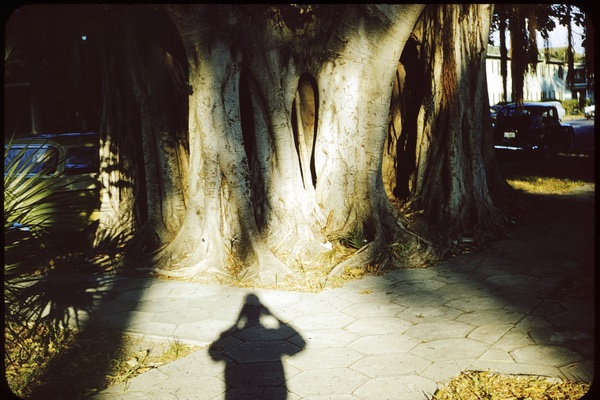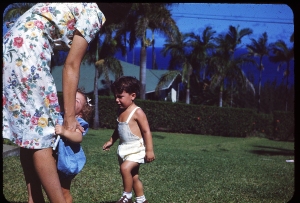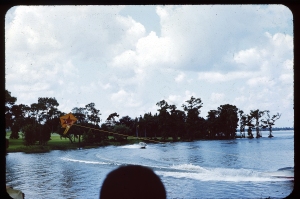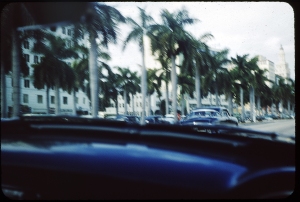By Jo Mazelis
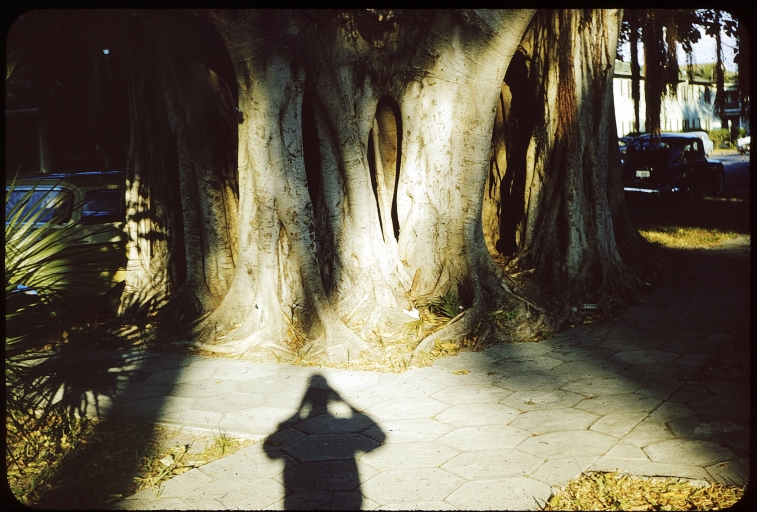
Because these photographs are both “found” and ‘anonymous,” and furthermore, because they date from a time when the “art” photograph was almost invariably in black and white, it is easy for the viewer to assume a more “innocent” process at work in the mind of their creator.
In other words, there is an assumed unmediated naivety, parallel to that perceived by the artists of the early modern period, in the work of Alfred Wallis in Cornwall, or in the “primitive” simplicity of African art.
The fact that these images are color slides adds to their uniqueness. Slides and, more especially Kodachrome slides, were astonishingly advanced both in their color saturation and longevity.
Furthermore, a slide, unlike a print, is more often than not the only extant copy of that image, so that while many found images are prints – the original negatives having been lost long ago–this set of slides is singular; literally and figuratively.
Additionally, slides by their nature, up until the advent of fairly recent computer technology, were for the most part only seen by means of a slightly complicated system of either a handheld viewer or projection.
My father had dabbled with amateur photography, and as well as setting up a home darkroom in order to print black and white enlargements, he, like many other enthusiasts, also took some color slides and invested in a projector and a screen. However, the fuss and effort involved meant that it was only rarely that we were able to view these pictures, and they remained locked away like a trove of brightly jewelled memories, inaccessible to us, unlike family albums prints. One can only assume that the same was true for many other amateur photographers and their families.
The slides in this book are all from a set I came across by chance, and bought after seeing less than a half dozen images. In some ways it was an act of madness; a gamble, a self-indulgence that I could ill afford. I considered that the five or so images I had seen might be the cream of the crop and there was a a strong chance that the rest of the images would be blurred, under exposed, dull, damaged or far more recent and thus less uncommon.
When the box arrived, as I opened it, I tried to temper my excitement against possible disappointment. I held up each slide to the light from the window. The first few I looked at had been loose in the box (the rest were bundled up with elastic bands) and these included the ones I had previously seen–every bit as bright and promising as I had hoped.
I dug out my old handheld slide viewer and began to look at the rest of the images in earnest. I could not quite believe what I was seeing, as image after image seemed to burst into life before my eyes; dazzling in their colors, reds in particular jumping forward as if the pictures were 3D.
More than that, these pictures were quirky, enigmatic and remarkable for the social and personal history they revealed. They seemed to resonate with and refute everything I knew about photographic history–its development, the schisms of snapshot versus art photography; of black and white versus color.
Here were pictures that brought to mind a raft of images by everyone from Nan Goldin (albeit minus the sex, drugs and rock and roll) to Elliott Erwitt, by way of Martin Parr, Joel Meyerwitz, Winogrand and Friedlander, and yet most of these images pre-dated, or arguably pre-empted them.
They also seemed to originate from before both the widespread popular use of color stock by amateurs, and conversely, the use of color by art and/or documentary photographers, (Eggleston and Shore both had their first ground breaking exhibitions of colour work in 1976).
The earliest of these images dates from 1940–only a small number are dated, though I concentrated my selection of images on those with clues to their periods: fashion, cars and man-made items like furniture and packaging. All of the images are full frame, and I have, for the most part, resisted “cleaning them up” except for larger distracting specks, for example, on faces.

